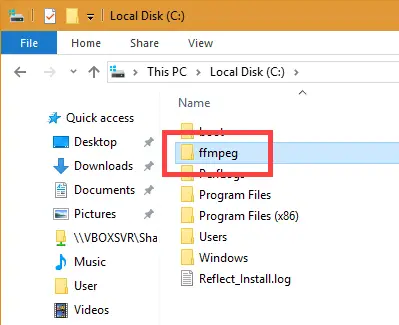

‘ffmpeg’ is not recognized as an internal or external command, operable program or batch file. However, if the installation is unsuccessful you will see the following message:.If FFmpeg is installed on your Windows 10 system, you will see details such as configuration or version number. Once the Command Prompt opens on your screen, type ffmpeg -version and hit the Enter key.Now you need to check if the installation process, press Windows+X keys and click Command Prompt (Admin) to run Command Prompt in the Administrator mode.Finally, close the environment variable window to use FFmpeg. FFmpeg files are now added to the system path on your Windows 10 PC.Click the New button, paste C:FFmpegbin and click OK to save the new path.Once the Environment Variables window is open, double click the Path variable under the User variables for lamba section to Edit it.Click the Advanced tab and select the Environment Variables option at the bottom of the window.Navigate to the top left-hand side of your screen and click Advanced System Settings.To enable FFmpeg in Command Prompt, right-click This PC and select Properties.Use Environment variables to add FFmpeg to Windows 10 path It will allow you to run the FFmpeg commands in the command prompt.Ģ.

Go to your C drive and paste the FFmpeg folder there.


 0 kommentar(er)
0 kommentar(er)
